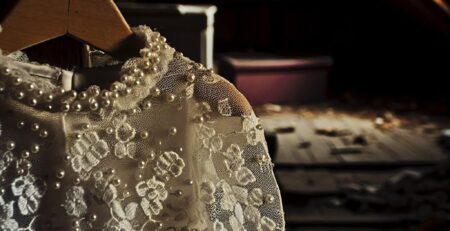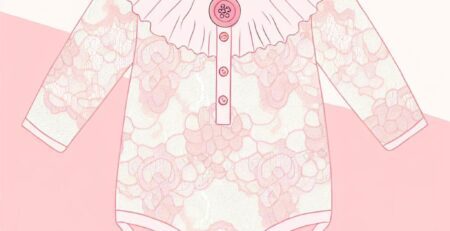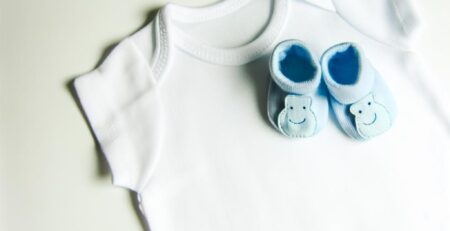The first trip from hospital to home is a small, ordinary journey that feels quiet and monumental all at once. Choosing the coming-home outfit for your baby is part tender ritual, part practical decision – a tiny capsule of care that should protect, comfort, and delight without adding stress to an already busy day.
This guide will help you weigh the essentials – fabric, fit, season, and ease of dressing – while also considering safety and a few sentimental touches that many parents like to include. Whether you imagine soft cotton bodysuits, a tiny knit romper, or a keepsake blanket, the right outfit balances warmth and accessibility so your newborn stays cozy and you stay calm.
No matter your style or the weather outside, thoughtful planning makes that first ride home smoother. In the sections that follow, you’ll find simple criteria and smart tips to choose an outfit that’s pleasant for baby, practical for caregivers, and suited to the very first memory you’ll bring back to your own front door.
Table of Contents
- Choosing the Right Fabrics for Newborn Comfort and Temperature Control
- Sizing and Easy Fit Designs to Make Dressing Quick and Safe
- Fasteners, Layers, and Outfit Examples for a Smooth Transition from Hospital to Home
- Seasonal Outfit Recommendations and Essential Accessories for Every Climate
- Safety, Practical Prep and Photo Ready Touches to Pack the Perfect Coming Home Outfit
- Q&A
- Closing Remarks
Choosing the Right Fabrics for Newborn Comfort and Temperature Control
Softness and breathability should be your north star when picking the outfit your newborn will wear home. Favor natural, lightweight fibers that let skin breathe and wick away moisture so baby stays cozy without overheating. Choose layers-a breathable bodysuit under a soft sleeper and a lightweight hat lets you add or remove warmth quickly. Pay attention to seams, tags , and snaps: flat seams, wide envelope necks, and hidden zippers help keep delicate skin happy.
- Best picks: 100% cotton, bamboo viscose, and lightweight merino blends
- Avoid: heavy synthetic knits, rough wool, or anything with stiff trims
- Tip: pick one piece in an easy-to-open design for quick diaper checks and safe car-seat positioning
| Material | Feel | Best For |
|---|---|---|
| Cotton | Soft, breathable | Everyday comfort, mild climates |
| Bamboo | silky, moisture-wicking | Warmth regulation, sensitive skin |
| Merino (light) | Thermoregulating | Cooler weather without bulk |
Sizing and Easy Fit Designs to Make Dressing Quick and Safe
Think of the coming-home outfit as both a photo-ready moment and a practical first kit for life at home. Aim for a size that gives a little breathing room-one size up is often the safest bet, so the outfit fits over a fresh diaper and still looks snug in the car seat. When in doubt, prioritize the baby’s weight on the brand’s sizing chart rather than length, and pick fabrics with a touch of stretch so tiny limbs can move without restriction. Keep layers simple: a soft bodysuit under a swaddle-friendly sleeper is all you need for warmth and comfort.
Fast, fuss-free designs keep everyone calm at the hospital and on the ride home. Look for garments with front or side snaps, two-way zippers, or an envelope neckline that lets you slide the outfit on and off without pulling it over the baby’s head. Avoid ties, long ribbons, or loose buttons that could be safety hazards. Below are quick-check features to prioritize:
- Easy openings: front snaps or long zippers for quick diaper checks and changes
- soft finishes: flat seams and fold-over mittens to prevent scratching
- Stretch & give: fabrics with a bit of elastane for gentle versatility
- Safe details: embroidered or printed motifs instead of glued-on accessories
| Closure | Why it helps | Best use |
|---|---|---|
| Snaps | Secure, easy for quick changes | hospital outfits & sleepers |
| Zipper | Fast, fewer fumbling hands | Car-ride layers |
| Envelope neck | Pull-down option-no head tug | fresh clothes after delivery |
Fasteners, Layers , and Outfit Examples for a Smooth Transition from Hospital to Home
Think practical first: choose soft, breathable fabrics (cotton or bamboo blends) and fasteners that let you change diapers without a full outfit swap. Snaps at the crotch or a two-way zipper are lifesavers in the car seat and during middle-of-the-night fussiness; avoid tiny back buttons that tangle with hospital bands. Layering a snug onesie, a footed sleepsuit, and a lightweight swaddle or sleep sack gives flexibility for hospital air conditioning and a warmer car ride. Keep hats and mittens handy for a newborn who can’t yet regulate temperature.
- Fasteners: crotch snaps or front zipper for quick changes
- Layers: onesie → sleepsuit → sleep sack/blanket
- Fabric: soft, breathable, machine-washable
- Extras: hat, socks, spare outfit for the ride home
For outfit ideas, think simple and photo-ready: a neutral onesie under a footed romper for a classic look; a soft gown with an elastic hem for easy diapering; or a cozy sleep sack layered over a long-sleeve bodysuit if it’s cool outside. Tuck the hospital ID and a spare pair of mittens in the same bag-small details keep the trip home calm and comfortable.
| Outfit | Pack This |
|---|---|
| Classic Onesie + Romper | Hat, socks |
| Newborn Gown | Extra diaper, mittens |
| Footed Sleepsuit + Sleep Sack | Swaddle, car seat cover |
Seasonal Outfit Recommendations and Essential Accessories for Every Climate
Think layers, gentle fabrics, and one practical rule of thumb: comfort first, cute second. Choose outfits with easy openings (snaps or a zipper that unzips from the bottom) and a little extra room so baby can stay swaddled or have a blanket without feeling confined. Breathable cotton or bamboo muslin works beautifully for warmer weather; a soft knit or cotton blend is perfect for mild days; and merino or fleece layers with a footed sleeper and a warm hat are essential for cold climates. Avoid long ties, heavy embellishments, or oversized hoods – safety and skin comfort are the priorities.
A quick cheat-sheet of must-have accessories by climate will help you pack without overthinking:
- Warm climates: lightweight swaddle, sun hat with wide brim, short-sleeve bodysuit
- Temperate climates: zip-up sleeper, thin cardigan, soft cap for changeable weather
- Cold climates: insulated bunting or footed romper, wool hat, lightweight blanket for the car seat (tucked under straps)
- Rainy/windy: water-resistant cover for stroller or car seat and a breathable hooded layer
| Climate | Best Fabric | Key Accessory |
|---|---|---|
| Hot | Muslin or bamboo | Light swaddle |
| Temperate | Cotton blend | Cardigan |
| Cold | Merino/wool layers | Warm hat |
| Wet/Windy | Water-resistant shell | Rain cover |
Tip: always dress baby in one more layer than you need and test by touching their chest – if it’s warm, they’re comfortable; if cool, add a layer. Also, double-check that any blanket or outer layer is tucked beneath the car-seat straps for safety.
 Safety, Practical Prep and Photo Ready Touches to Pack the Perfect Coming Home Outfit
Safety, Practical Prep and Photo Ready Touches to Pack the Perfect Coming Home Outfit
Think practicality first: choose fabrics that breathe and stretch, fastenings that open easily for diaper changes, and layers that let you adjust to car-seat and room temperatures in a heartbeat. Check every snap, seam, and label for irritation risks and skip long ties or loose embellishments that can become hazards. Pack a small emergency kit with a spare onesie, socks, and a soft hat – easy swaps save the day when feedings or sneezes happen. A quick checklist helps everyone breathe easier, so tuck one into your bag and hand it to the person driving.
For pictures that feel timeless without sacrificing comfort, aim for simple palettes and subtle textures: a muted knit, a tiny embroidered detail, or a swaddle in a single tone will photograph beautifully and keep the focus where it belongs. Keep accessories minimal and secure – one small bow or cap for photos, removed for sleep or the car seat – and bring a small steamer or wrinkle-release spray for last-minute smoothing. A tiny quick-fix table like the one below can guide photo prep on the go:
| Quick Fix | Time | Why |
|---|---|---|
| Swap a damp bib | 1-2 min | Instantly fresh look |
| Smooth swaddle | 30 sec | Keeps composition clean |
| Replace hat | 10-20 sec | Warms and completes the outfit |
Q&A
Q: What is a “coming home” outfit, and why does it matter?
A: A coming home outfit is the set of clothes your newborn wears when leaving the hospital for the first time. It’s small but meaningful: practical for comfort and diaper changes, safe for the car ride, and often chosen for photos or sentimental reasons. The right outfit balances warmth, safety, and ease.
Q: What are the most important things to consider when choosing an outfit?
A: Prioritize safety, comfort, and practicality. Think about fabric (soft, breathable), ease of diaper changes (snaps or zippers), car seat compatibility (no bulky coats under harness), and weather. Also consider hospital policies and any family traditions or photos you want to take.
Q: Which size should I pick – newborn or 0-3 months?
A: Newborn sizes fit many babies, but not all. Some newborns are long or large and will need 0-3 months. If unsure, pack both or choose 0-3 months for a safer fit. For preemies, check NICU guidance and preemie-specific sizes.
Q: What fabrics are best?
A: Choose soft, breathable natural fibers like cotton or cotton blends. They’re gentle on sensitive skin and regulate temperature. Avoid scratchy or heavily textured fabrics and anything treated with strong fragrances or chemicals.
Q: How should I dress the baby for different weather?
A: summer: lightweight cotton onesie or footed romper, thin hat for sun protection. Spring/Fall: layers – onesie + lightweight sleeper + hat. Winter: thin base layer, a warm footed sleeper, a knit hat, and a blanket or approved car seat cover over the harness. Always adjust layers to the indoor temperature in the hospital and check the baby’s comfort.
Q: What about car seat safety and bulky coats?
A: Never place bulky coats or snowsuits under the car seat harness - they compress in a crash and leave the harness too loose. Instead, buckle the baby in with thin layers, then drape a blanket or approved car seat cover over the harness after buckling. Follow your car seat manufacturer’s instructions.
Q: Which closures are most practical – snaps, zippers, or buttons?
A: Zippers and snap crotch openings are quickest for diaper changes and middle-of-the-night fussing. Buttons might potentially be prettier, but are slower and sometimes harder to manage with a squirming newborn.
Q: Are hats, mittens, and socks necessary?
A: A soft hat is frequently useful in cooler environments, as babies lose heat through their heads. Mittens help prevent fingernail scratches. Socks or footed sleepers keep toes warm. Remove layers if the baby feels hot.
Q: Can I use a family heirloom or special outfit?
A: Yes, if it’s clean and hazard-free. Check for loose beads, snaps, or fragile embroidery that could be a choking or scratch risk. Also consider whether the heirloom fits and won’t make the baby too hot or cold.
Q: What should I avoid for safety reasons?
A: Avoid loose strings, ties, decorative buttons, small detachable decorations, and anything that could tangle with the car seat harness. Also, avoid overly fluffy blankets or stuffed toys in the car seat.
Q: Should I pack more than one outfit in my hospital bag?
A: Yes. Pack at least two coming-home outfits in different sizes or styles. Bring extras for spit-ups, unexpected messes, or temperature changes. Also pack a receiving blanket and a spare hat.
Q: How should I wash the outfit before use?
A: Wash with a gentle, fragrance-free detergent suitable for baby skin. Rinse thoroughly and avoid fabric softeners and dryer sheets that can leave residues. Air-dry or use a low-heat cycle.
Q: Any tips for dressing a baby after a C-section or for a mom recovering from birth?
A: Choose clothes that allow easy access and comfort for mom. For the baby, front-opening outfits (snaps or zippers) can make transfers and feeding easier. If mom needs help bending, a gown-style baby outfit or zippered sleeper simplifies dressing.
Q: What about preemies or babies in the NICU?
A: NICU babies may require specific sizing and medical access (IVs, monitors). Check with the NICU staff about approved clothing, as tiny infants need specially sized items, and some units provide garments for the ride home.
Q: How can I make the outfit photo-ready without sacrificing comfort?
A: Choose simple, neutral colors or gentle patterns and soft fabrics. Avoid stiff collars, heavy embellishments, or anything that could irritate the skin. A plain, well-fitting footed sleeper or a small dress/shirt set for photos works well.
Q: Are there cultural or religious considerations to keep in mind?
A: Yes. Some families have customary garments for blessings, naming ceremonies, or first outings. Make sure any ritual clothing is safe, fits, and is permitted by the hospital and car seat rules.Q: Where can I buy good coming-home outfits?
A: Baby stores, general retailers, and online shops all sell suitable outfits. Look for reputable brands with good safety records and read reviews about fit and fabric. Local thrift shops or hand-me-downs can also be great – just inspect carefully and launder before use.
Q: Quick checklist to pack in the hospital bag for coming home:
A: 1) Two outfits in different sizes, 2) Hat and mittens, 3) Socks or footed sleepers, 4) Receiving blanket, 5) Car seat (installed and checked), 6) Extra diapers and wipes, 7) Gentle detergent sample if you plan to wash at the hospital.
Q: Final practical tip?
A: Think of the coming-home outfit as a soft welcome: prioritize safety and ease over looks, layer for the weather, avoid bulky clothing under the car seat harness, and bring backups. A comfortable baby makes for a smoother ride home and better photos.
Closing Remarks
Choosing a coming home outfit is part practicality, part heart – a small bundle of choices that says hello to the world. Keep comfort and safety first, think layers and easy diaper access, and pick fabrics and a fit that suit your baby’s size and the weather. Tuck in a spare outfit and a soft blanket, and don’t forget that sentimental touches or family traditions can make the moment feel even more personal.
The perfect outfit doesn’t have to be perfect – it just needs to help your baby feel cozy and let you focus on the new routine. Take a deep breath, trust your instincts, and enjoy that first little walk out together; the welcome you give will outshine any label.



 Safety, Practical Prep and Photo Ready Touches to Pack the Perfect Coming Home Outfit
Safety, Practical Prep and Photo Ready Touches to Pack the Perfect Coming Home Outfit









Leave a Reply